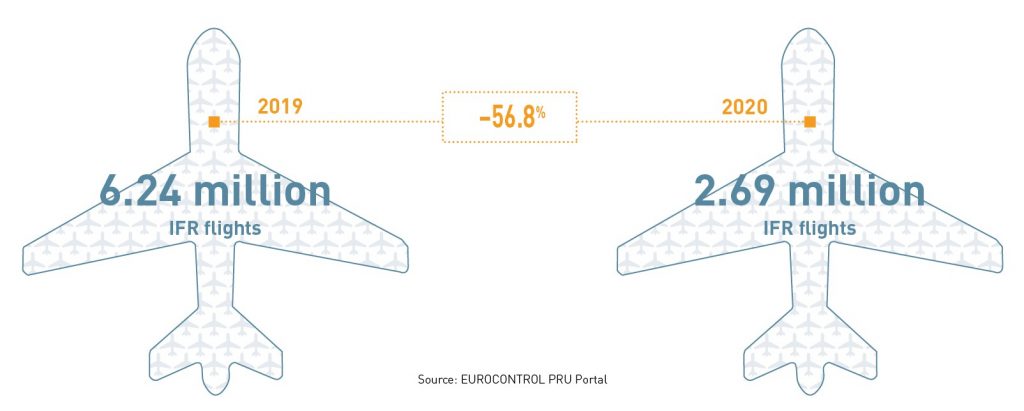While FABEC total traffic fell below volumes previously handled at the end of the last century, FABEC ANSPs used the downturn to implement efficiency measures including more direct, shorter routes and improved vertical flight profiles. Total en-route air traffic flow management delay fell 88.6%, and the airport arrival delay fell 82.5% as FABEC ANSPs responded flexibly to the schedule disruption.
Predicting traffic demand is increasingly difficult. Eurocontrol’s initial forecast for 80% recovery by year-end was downgraded to 55% in September 2020, and a return to 2019 levels within the FABEC airspace forecast not before 2024. Acknowledging the big uncertainty FABEC ANSPs are using this period to enhance cooperation, improve environmental performance and increase digitalisation in line with European Commission objectives while being prepared for the return of traffic.
FABEC Chairman and skyguide CEO Alex Bristol said: “FABEC controllers play a critical role in supporting safe and efficient delivery of essential supplies. It is vital we continue to invest in the critical ATM infrastructure to ensure we are ready for traffic return from 2024.”
Maurice Georges, FABEC Champion Operations and DSNA Director stressed: “FABEC staff demonstrated huge resilience and flexibility during the pandemic. Thanks to our strong collaboration, we can take advantage of new, coordinated operational initiatives supporting even more efficient sky, with enhanced environmental performance.”
The airspace of the six FABEC States of Belgium, France, Germany, Luxembourg, the Netherlands and Switzerland is one of the busiest and most complex in the world. The majority of the major European airports, major civil airways and military training areas are located in this area. FABEC airspace covers 1.7 million km² and handles about 55% of European air traffic.
Tags: FABEC
